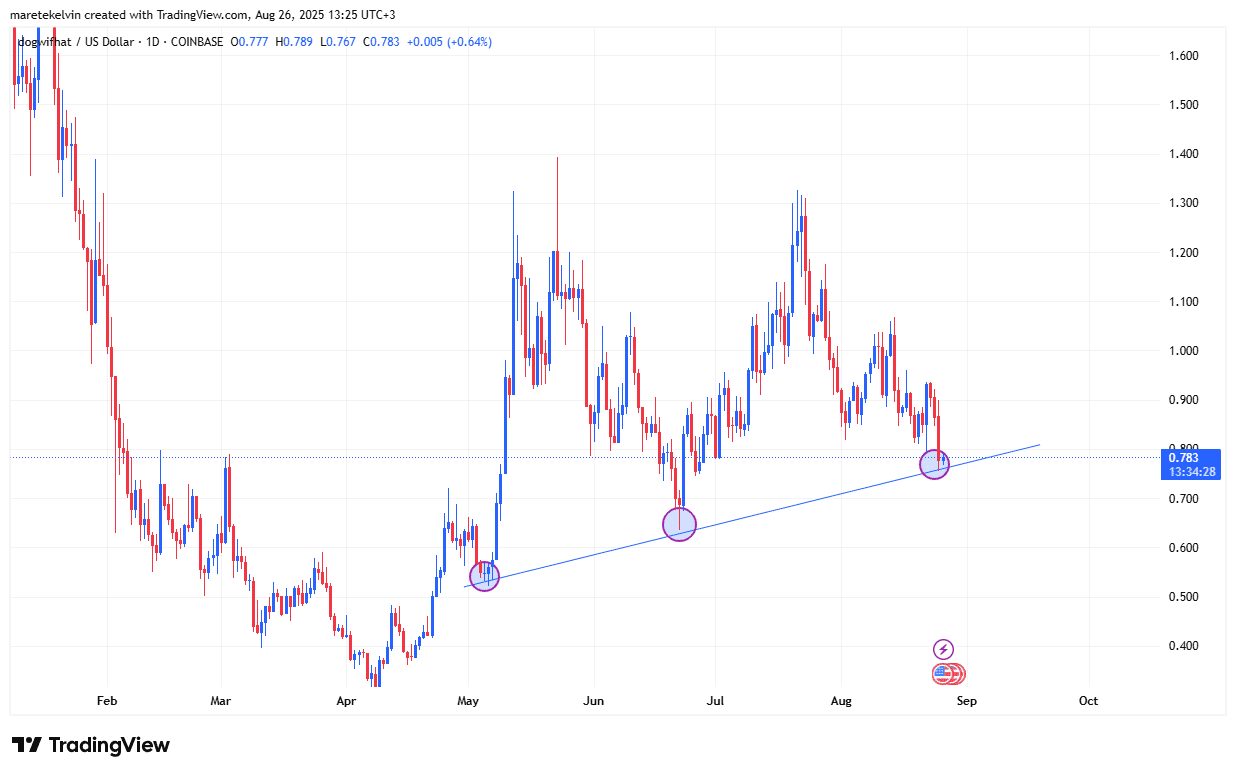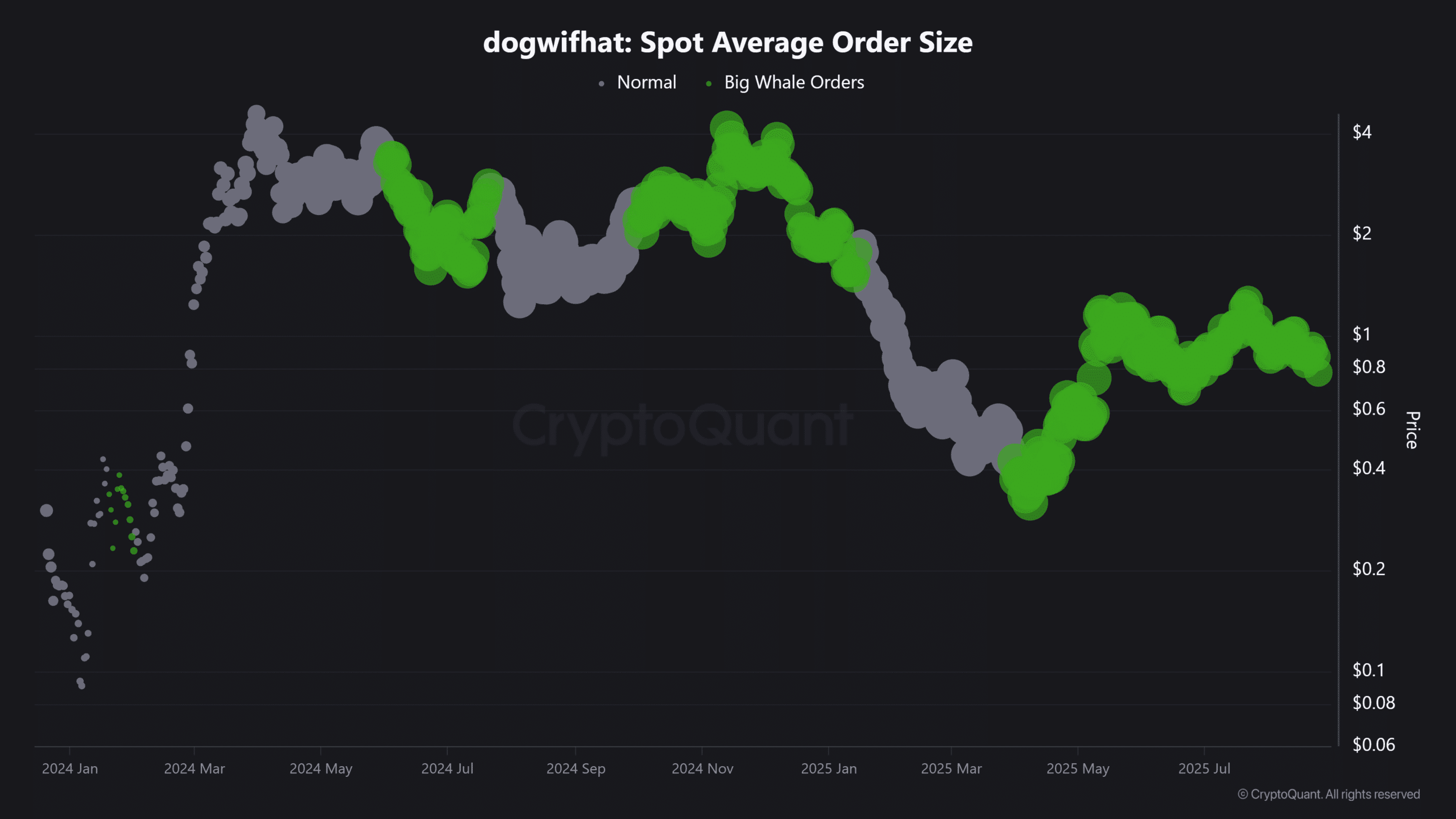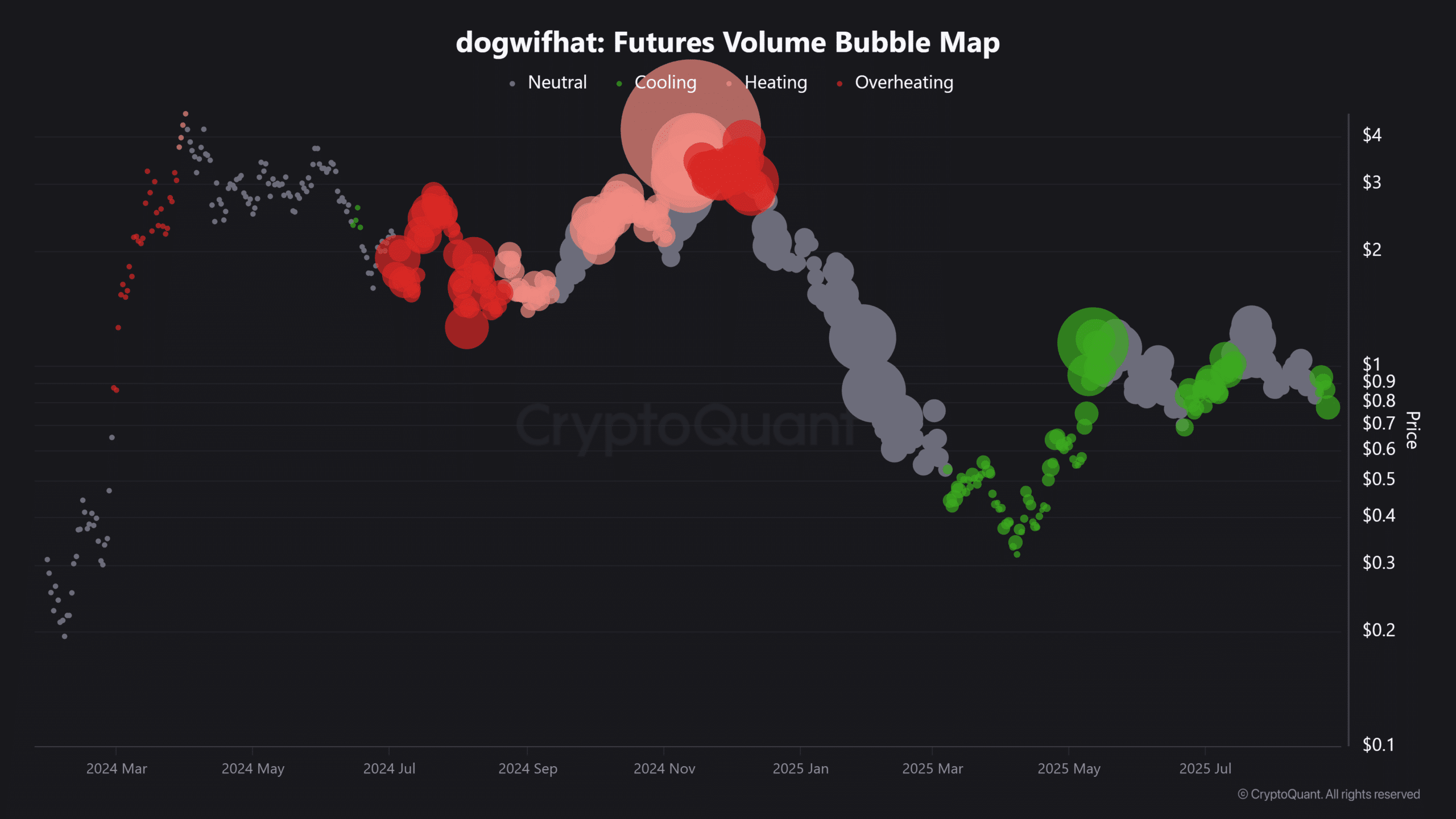Dogwifhat (WIF) has once again tested the important support level at the upward trend line around 0.76 USD on August 26. This price level has repeatedly served as a 'shield' helping this memecoin limit strong pullbacks throughout this year.
On the daily chart, WIF is signaling a return to stability. Active buyers are protecting this support level, creating momentum for a notable accumulation phase.

WIF whales are entering: 'Buy the dip' to prepare for a long-term trend
According to the latest on-chain data, large investors – often referred to as whales – are quietly accumulating long positions around the support zone of 0.76 USD. This is a price level that WIF has tested multiple times this year and still retains solid defensive characteristics.
Intentional whale accumulation
The Average Order Size chart from CryptoQuant shows that many large buy orders continue to appear in the spot market. This move reflects the confidence of experienced players in WIF's medium to long-term outlook, rather than just participating in short-term hot rallies.
It is noteworthy that whales often do not 'chase prices' during acceleration phases, but instead choose to accumulate during correction or consolidation phases. This strategy often creates a stable foundation, reducing the risk of a 'bull trap' and supporting a more sustainable growth cycle later on.

Institutional participation via futures contracts
Alongside the accumulation activity in the spot market, data from CoinGlass shows that open interest (OI) on WIF futures has steadily increased up to August 26. This is a clear signal that institutions and investment funds are establishing positions, expecting WIF to enter a new rally.
Increased OI often means that institutional capital is flowing into the market, not just limited to short-term speculation but aimed at longer-term risk management and profit strategies.
When cash flow in the spot market – where whales accumulate long-term – combines with the expansion of the futures market, the overall confidence of investors in WIF's bullish outlook will be significantly strengthened. This is an important consensus, as if only one of the two markets gives a positive signal, the uptrend is often difficult to maintain for long.

The derivatives market is signaling a slowdown.
Although signals from the spot market are quite optimistic thanks to accumulated buying from whales, WIF's futures market is showing signs of cooling down, indicating a lack of consensus between the two important trading segments.
Liquidity and speculative activity slow down.
Data from CryptoQuant indicates that the futures trading volume bubble chart has narrowed significantly, reflecting a decrease in liquidity and trading volume. This suggests that futures traders are reducing their level of participation, becoming more cautious after a previous period of strong volatility.
When futures volume declines:
Market liquidity is less flexible, making it difficult for prices to break out in the short term.
Price volatility decreases, as indicated by the narrowing trading range. This is characteristic of 'resting' phases or preparing for new volatility.
Speculative sentiment weakens, indicating that hot money is withdrawing, leaving room for long-term cash flow (whales and institutions).
The divergence between the spot market and futures contracts often leads to a state of consolidation:
The spot market is strongly supported by whale accumulation activities, keeping prices from falling deeply.
The futures market lacks speculative momentum, preventing an immediate surge.
In this context, WIF tends to maintain stability around important support-resistance levels, rather than creating a strong breakout. In other words, prices may move sideways for a period, waiting for consensus to return from both markets.

Upcoming outlook for WIF
At this moment, the support zone of 0.76 USD continues to play a crucial role as a 'key level' for WIF's price structure. This is not only an important technical support level on the daily chart, but also a reference point for market sentiment: buyers see this as an attractive price zone to accumulate, while sellers view it as a target to test strength.
Positive scenario
If WIF continues to hold above the 0.76 USD mark, buying pressure from whales and institutional investors could become an important catalyst, helping to consolidate the upward trajectory. In that case:
The nearest resistance level is around 0.82 – 0.85 USD, where the price previously stalled multiple times. A decisive breakout from this area will be the first signal confirming a short-term uptrend.
The next target area could aim for 0.92 – 0.95 USD, a strong resistance level associated with recovery peaks in previous rallies.
If the cash flow continues to increase, especially as the open interest (OI) in futures contracts expands again, WIF could well re-test the 1 USD mark – both technically and psychologically significant.
In this scenario, positive signals from whales will form a foundation for a more sustainable growth cycle rather than just short-term 'pump' events.
Neutral/negative scenario
Conversely, if the trading volume in futures contracts continues to decline, it indicates that short-term speculative power in the futures market is no longer strong. At that point:
WIF may lack the immediate breakout motivation, instead falling into a sideways consolidation state. In this scenario, the trading range may maintain around 0.73 – 0.85 USD, reflecting the tug-of-war between accumulated buying pressure and short-term profit-taking.
If selling pressure increases and the buyers fail to successfully defend the 0.76 USD level, WIF risks sliding down to lower support levels, first around 0.7 USD, and further down to the 0.65 – 0.66 USD range, where strong buying pressure has appeared in the past.
However, even in a corrective scenario, whales continuing to accumulate can still limit deep declines and create a foundation for a stronger rally in the medium term.
Dogwifhat is currently at an important crossroads: whales persist in accumulating, but speculative cash flow in futures is declining. The balance between these two factors will determine whether WIF has enough momentum to break through to higher price levels or must undergo a prolonged accumulation phase before returning to a growth trajectory.
